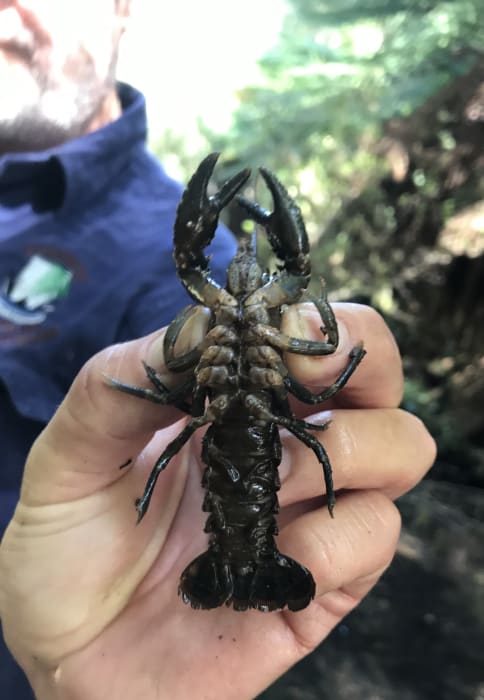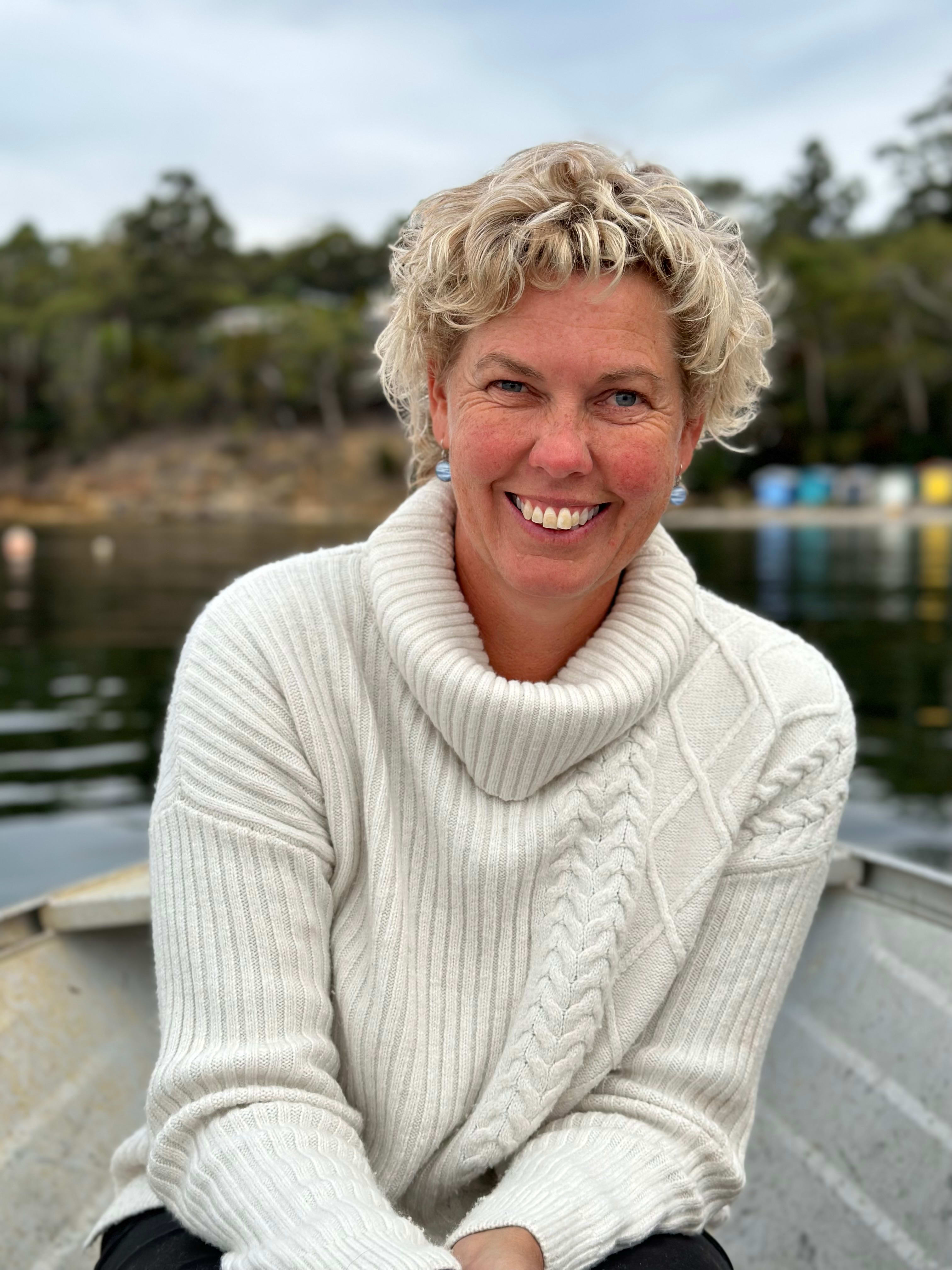photographer TERRY MULHERN
We get on well with the farmers whose property wraps around our seven hectares of paradise. Theirs is a family affair. The aged parents live in the old farmhouse, along with one adult son. Two other sons live and work elsewhere, but come back regularly, especially when a big job is on, like baling hay.
We have a mutually beneficial arrangement with the farmers – they cut, bale and take the hay from our paddock and in return for keeping an eye on our place when we’re not there. They also generously help with the jobs beyond this city boy, such as anything involving a chainsaw. It’s an arrangement we hope will continue for some years to come.
In 2022, wet weather meant the hay was late coming off. The farmers had cut and cleared our usual summer camping spot for us, but over the rest of the paddock, the hay lay drying in windrows. So, the “country girl” (aka my wife) and our 12-year-old son helped with the baling. Both of them get rather excited by farm machinery. The country girl could drive a tractor and an old Dodge flatbed before she could see over the dashboard, and the boy is my late father-in-law reincarnate.
For much of the summer, the country girl and I dig out weeds. This may not appeal to everyone, but I find it deeply satisfying. Many people prefer to spray, and that’s their choice, but we dig out, pile-up and burn. I’ve developed a deep and abiding hatred for thistles and blackberry. They spread so easily. If anyone upwind or upstream has them, so do you. But I’m proud to say we now have the weeds under control.
Except, that is, for one spot we had been hesitant to tackle. From time immemorial, a dense thicket of blackberry has flourished in the wetland below our dam. Its long spiny tendrils weave around and along the fence between our place and the farmers’, making it hard to get to and hard to remove. And that’s not all. The wetland looks like ideal snake habitat.
Our little creek cascades down from the dam into a large deep pool at the edge of the wetland. The boggy ground is thick with tussocky reeds and sedges and is alive with frog-song. Beyond the boundary fence, the creek re-forms, and meanders gently for a few hundred metres under a canopy of eucalypts and blackwoods, until it meets the big creek on the farmers’ place.
Nevertheless, over the 2022-23 summer we got in and cleared the wetland of blackberry. We wore high rubber boots, and I banged my shovel on rocks and fence posts as I trudged into the mire, loudly suggesting any slithering reptiles should make themselves scarce. And that seemed to work.
Part of the decision to buy this particular property was the strong likelihood it was habitat for lutaralipina, the Tasmanian giant freshwater crayfish or “lobster” (Astacopsis gouldi). We know our place is a haven for other threatened species. Often, a pair of wedge-tailed eagles can be seen circling high above. Two summers ago, we spied a white morph of the grey goshawk roosting in one of our densely forested gullies. The damp floors of these gullies are peppered with thousands of tiny, volcano-like earthen chimneys thrown up by the Burnie burrowing crayfish (Engaeus yabbimunna). At night, my infrared camera captures images of our local devil and spotted-tailed quoll, along with other nocturnal creatures including long-nosed potoroos and eastern barred bandicoots.
Whether we have lobsters is difficult to ascertain. We’re in the right place and have what looks to be good lobster habitat, but they are secretive creatures, and it’s illegal to trap them without a permit. Thankfully, I know someone with a permit – Todd Walsh.
Walsh has been studying the giant freshwater crayfish for decades. He’s without doubt their most avid advocate and passionate protector. My interest in these animals led me to cross paths with him a few years back.
Walsh generously agreed to survey our place in March, 2023. The weather gods smiled that weekend, and I met Walsh at the gate on a bright, clear, cool autumn morning. We discussed a plan of attack and then Walsh donned his waders and slung on his backpack containing kit for measuring, weighing and tagging lobsters. We each grabbed a bundle of traps and set off towards the dam.
As we stood on the causeway, looking across the still water to where the trees and man ferns met their mirror-mates, Walsh agreed this looked like lobster territory. Buoyed by his confidence, I followed him along a scrubby wallaby track to where the water shelved deeply from the shore. Walsh baited a trap and flung it out into the dark water, where it quickly sank from view. We repeated this process all along the steep side of the dam and then headed towards the wetland.
Walsh took one look and suggested it “might be a bit snakey”. I told him we’d never seen one in three summers. So, with a shrug, he marched into the wetland and put a trap in the pool. Now we needed to wait about an hour before checking each trap in turn.

The survey of our place was Plan A. I also had Plan B. Despite appearances, the farmers are closet conservationists. Sure, you’d never see one chained to a bulldozer, but they care deeply for the environment and wildlife on their property and, best of all, they were happy for Walsh to survey their place too. So, we climbed the fence (free of blackberry) and set traps in the deeper sections of the little creek down to its junction with the big creek.
Upon reaching the big creek, I could sense Walsh’s demeanour change. His excited eyes darted left and right. Many years ago, the big creek was fenced off from livestock, maintaining a wide buffer of natural vegetation. Ancient, twisted trees adorned with moss and bright green epiphytes shade the slowly moving water. All along the stream there are enormous log jams and deep, inky black pools. In the shallows, the orange tannin-stained water dances over rocky “riffle zones”. We set traps along about one kilometre of the big creek, then hiked back uphill to check the ones set earlier.
The day was now warm. The sun was out and scattered fluffy white clouds adorned a brilliant blue sky. We were sweating as we climbed the fence and made our way towards the pool in the wetland. Then Walsh froze, and I almost ran into him from behind. I looked over his shoulder and saw the last half a metre of a tail disappear into the reeds. It was nightmare black and thick as my forearm. Walsh saw the creature in its entirety, and I won’t quote him exactly, but with a “colourful” turn of phrase he emphasised it was the largest tiger snake he’d ever seen. This is something, coming from someone who’s encountered hundreds of snakes over the years.
We stood in awe for some time. The snake seemed to head deeper into the wetland, away from the pool. Somewhat nervously, we checked the trap. We had no joy there, and none in the dam, nor along the small creek.
Somewhat deflated, we headed back down to the big creek. Here, it was a completely different story. The first trap contained two big glossy black male lobsters. The larger one weighed more than 2kg. This stunning colouration – jet black – is rare. Over the course of the next few hours, we trapped five more adult lobsters, two more gleaming black and the rest deep orangey brown – the colour of antique beer bottles. They were a mix of males and females, all weighing more than 1 kg. In the rocky riffle zones, we found finger-sized juveniles hiding under large stones.
I feel joy, knowing my neighbours host a thriving population of lobsters. And honestly, they’re safer there than on public land where poachers have easy access and forestry trashes streams with inadequate buffer zones, allowing silt-filled runoff to destroy the waterways.
We found two of the farmers fixing a fence halfway up the hill towards our place. They were nonchalant when we jubilantly described our success on the big creek.
“Oh, yeah,” they said. “There’s always been plenty of lobsters in there.”
It takes true altruism to protect and nurture habitat on private farmland. My neighbours are not part of any government program. No one shares the costs of fencing and off-stream watering points for livestock. They do it because it’s the right thing to do.
Hopefully, late one summer, a female lobster in the big creek, heavily laden with purple eggs under her tail, will sense something attractive in the water flowing down the small creek. She will follow the enticing scent, slowly clambering upstream over rocks and logs. And perhaps she and her babies will make their home in the dam or that deep pool in our “snakey” wetland.
Terry Mulhern is a writer and academic. He has lived in Victoria for more than 20 years but, like a swift parrot, he migrates every summer across Bass Strait to north-west Tasmania.











